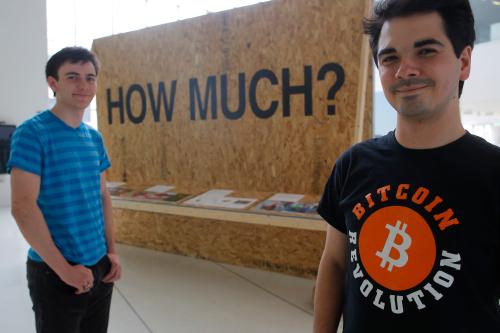Record high values for cryptocurrencies like bitcoin have prompted different responses from national governments. In Estonia, an effort to create a national cryptocurrency called the “estcoin” was rebuffed by the president of the European Central Bank. Though the Baltic country is a world leader in delivering government services digitally, it is forbidden from issuing currencies that would compete with the euro. Meanwhile, China shut down all of its domestic cryptocurrency exchanges, making it difficult to use them for anonymous financial transactions. Governments will ultimately determine if the technology gains widespread acceptance, but banning them outright forsakes their potential benefits.
Cryptocurrencies get their name from the cryptography that secures transactions. Just like watermarks and intricate designs stifle cash counterfeiting, embedded code exposes any attempts to create fake cryptocoins or to spend the same coins twice. The process begins with the blockchain, a public ledger of encrypted transactions distributed to all computers running a cryptocurrency’s software. Computers “mine” new coins by verifying new transactions against previous ones, encrypting them, and adding them to the blockchain. New coins are paid out on a fixed schedule to computers that add to the blockchain. Since updates are sent to the entire network, fooling the system requires one group to control the majority of processing power connected to the network.
A matter of trust
The decentralized nature of cryptocurrencies allows them to operate without trust in governments or banks. Central banks work to stabilize the value of national currencies, like the Chinese yuan and the U.S. dollar, but several historical and contemporary examples show the value of these currencies can collapse. Weimar Germany in the 1930s, Zimbabwe, and now Venezuela show what that printing money too quickly erodes its value. Some Venezuelans have even turned to bitcoin as a more stable alternative to their bolívar. A cryptocurrency’s code can precisely control the quantity of coins to prevent this kind of hyperinflation.
However, a currency designed without a government cannot eliminate the need for governance. This year has seen several new versions of Bitcoin such as Classic, Unlimited, Cash, and Gold. Each version supplies a potential technical fix needed to efficiently process a growing number of transactions. Unless all Bitcoin holders can agree on how to proceed, new versions create a “hard fork” in the blockchain that is not recognized by older versions. These splits shows how cryptocurrency must adapt to the needs of its users or they will find a better alternative. Lacking a central bank, the community of users must trust one another to make decisions about how to manage the currency.
Easy money
Given their wildly fluctuating values (bitcoin recently reached a peak value over $6,000), cryptocurrencies are unlikely to replace fiat currencies for everyday transactions any time soon. But that should not stop central banks from adopting features of cryptocurrencies that can improve their operations. The People’s Bank of China has tested a digital currency that simulates transactions with commercial banks. Even prior to public use, a digital currency used between banks could speed up payments processing. Adopting blockchain might also accelerate the transition to a cashless society that is already well underway in economies as varied as Sweden, Kenya, and China.
The monopoly that governments hold over issuing money largely insulates them from pressure to innovate, and the desire to maintain a stable value also discourages innovation. The creators of cryptocurrencies are free to experiment, but widespread adoption requires a governance structure that can maintain a stable value and quickly adapt to the needs of users. Central banks could incorporate features of cryptocurrencies into existing monetary systems with more research and development. In the end, financial institutions may reap the most benefit from a currency designed to circulate without them.
The Brookings Institution is committed to quality, independence, and impact.
We are supported by a diverse array of funders. In line with our values and policies, each Brookings publication represents the sole views of its author(s).









Commentary
Cryptocurrency crackdowns deny a potential source of innovation
October 30, 2017